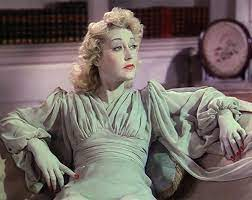In June 1937, the Lancashire Evening Post reported the following:
"Three members of the Social Credit Party of Great Britain and Northern Ireland were charged at Luton today with wearing political uniforms at an open air meeting. The magistrates dismissed the case.
The Chief Constable said that permission was given to an organisation who, according to their notepaper, were known as "Green Shirts", to hold an open air meeting.
On April 24th, police officers saw a procession headed by five men beating green drums and five people carrying banners with a "K" and a reversed "K" in white on them. This was the Social Credit Party.
The men were wearing green shirts with green collars and ties and the majority were wearing mackintoshes or overcoats. They were all wearing armlets, with the emblem of the party on them in white.
One speaker at the meeting wore a green jersey or shirt, green tie and a fawn raincoat with an armlet and badge. Another was wearing an ordinary suit with a green tie, armlet and badge in his lapel.
Mr David P Kennedy, defending, submitted that the prosecution had not proved that the men were wearing a distinctive dress of the same colour, pattern and appearance."
The 1930s are overshadowed by political uniforms and shirts of a certain hue, and this resulted in the banning of large scale meetings attended by people in uniforms. But the Green Shirts are less well remembered and as this shows, not taken as seriously.
The Social Credit Party was established in the early 1930s and grew out of the Kindred of the Kibbo Kift. This was a youth movement set up to answer the scouts and its military undertones - the Kibbo Kift's aims were peaceful and centred around nature. The aims of the political party were complex but ultimately wanted social and economic equality. They disbanded in the Second World War and any attempts to revive the party after the war seem half hearted and short lived.
So why would the party choose green shirts? Probably the links to the countryside orientated Kibbo Kift and a wish to link themselves with Robin Hood. But judging by the article above, they were a bit of a ramshackle band of warriors who were unable to sort out a proper uniform, and didn't want to take off their overcoats.
Green can have an association with madness - think arsenic and green ink letters - combined with their ramshackle appearance they were perhaps treated as cranks and therefore treated leniently and with a knowing smirk.
Green may have been fashionable, but this shows it was not a serious colour and didn't hold any sinister undercurrents.










